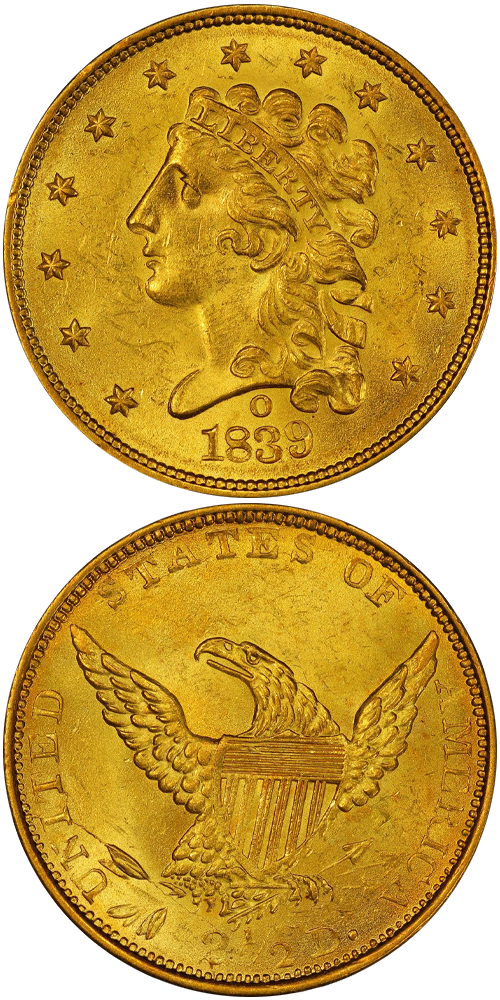1839-O Classic Head Quarter Eagle
Founded by the same document that led to the establishment of branch mints in the backwater mining districts of western North Carolina and northern Georgia, the New Orleans Mint had a different character from the beginning. New Orleans mined not ore, but commerce, and the mint's bullion came not from nuggets and dust, but from the coins that poured into the port city from Latin America (especially Mexico), Europe, and beyond. In 1842, the assayers of the Philadelphia Mint, Jacob R. Eckfeldt and William E. DuBois, penned A Manual of Gold and Silver Coins of All Nations, a text that became a road map for some of America’s earliest coin collectors. They describe the nature of the first three branch mints therein: "Two of these were for the coinage of gold only, and were to be situated at the towns of Charlotte in North Carolina, and Dahlonega in Georgia -- central points of the gold mining region. The third branch was for both gold and silver, and located at New Orleans, the commercial emporium of the southwest." Eckfeldt and DuBois report that, from the time the flywheels on its presses first started spinning until the end of 1841, the New Orleans Mint coined over $1.5 million worth of silver coins but just $326,190 worth of gold, far less than the mints at Charlotte and Dahlonega over the same interval. When the melter and refiner of the New Orleans Mint, John L. Riddell, wrote his own book in 1845, he focused entirely upon the sorts of silver coins he encountered in bullion deposits, both counterfeit and authentic. That gold coins were not mentioned at all suggests that they were a comparative afterthought. History supports this, as New Orleans was known at the time as the American gateway to Mexico and Latin America, lands that sent thousands of tons of generally low-quality silver coins into the world market every year but, at this point, relatively little gold.
Just 17,781 quarter eagles were struck in New Orleans in 1839. It was a small initial output, but the Mint added half eagles in 1840 and eagles in 1841. As a town built on commerce, New Orleans placed its gold coins into circulation immediately, and quarter eagles from the New Orleans Mint are found well-worn more often than specimens of this denomination from any other mint.
The example to the left was sold by Stack's Bowers Galleries in the Daryl J. Haynor Virginian Collection, where it realized $120,000.






